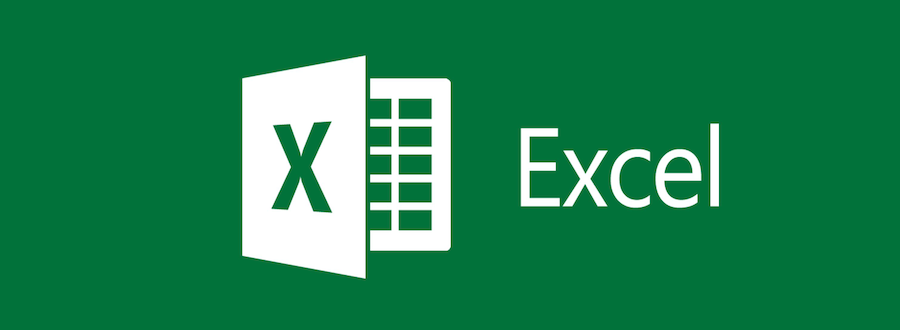Apple's iTunes started off as a simple music player and grew into so much more, becoming a platform for consumption of television, movies, apps, and podcasts. See what iTunes used to look like as we explore this app over the years.
iTunes Logo History
The iTunes logo has always been focused on music, even as the ambitions of the application grew beyond the original scope. The CD was a prominent part of the logo until 2010, when it went away in iTunes version 10.

iTunes logo history (2001-2015)
Source: Apple Explained
iTunes 1 (2001)
The history of iTunes began with Apple's acquisition of a company that created an mp3 player called SoundJam MP in the year 2000. SoundJam's creators worked on iTunes' first version and produced a simple yet reliable music player app for Mac computers. The music visualizer brought audio to life and was a popular feature at the time.

iTunes 1 Empty Library (2001)
Source: macintoshrepository.org

iTunes 1 Music Library (2001)
Source: arstechnica.com

iTunes 1 Playing Songs (2001)
Source: arstechnica.com

iTunes 1 Music Visualizer (2001)
Source: Studio Vision Control

iTunes 1 Music Visualizer Full Screen Mode (2001)
Source: Gokusen
iTunes 2 (2001)
The second iteration in the iTunes evolution brought iPod support and an equalizer (EQ) module.

iTunes 2 About Dialog (2001)
Source: appletothecore.me

iTunes 2 Setup (2001)
Source: Luigi2012SM64

iTunes 2 Music Library (2001)
Source: appletothecore.me

iTunes 2 Mini Player (2001)
Source: appletothecore.me

iTunes 2 Equalizer (2001)
Source: ilounge.com
iTunes 3 (2002)
iTunes 3 brought Audible.com audiobook support and smart playlists.

iTunes 3 Music Library (2002)
Source: arstechnica.com
iTunes 4 - Music Store, Windows Support, and Podcasts (2003-2005)
Of all the iTunes early versions, 4 lasted the longest and had the most varied updates of the iTunes timeline. Existing about 2.5 years, it brought the music store, a Windows version, DVD burning, and podcasts. Podcasting was a novel concept at the time, and there's no queston that iTunes' embrace of the format accelerated adoption. Here's Steve Jobs announcing the feature at Apple's WWDC in 2005.

iTunes 4 About Dialog and Music Library (2003)
Source: macrumors.com

iTunes 4 for Windows (2003)
Source: macosxstuff.tripod.com

iTunes 4 for Windows with Expanded Genre, Artist, and Album (2003)
Source: jeffwerner.ca

iTunes 4 Music Store (2003)
Source: macworld.com

iTunes 4 Music Store (2003)
Source: theninhotline.com

iTunes 4 Music Store Annie Lennox Page (2003)
Source: soundonsound.com

Steve Jobs Announces Podcast Feature (2005)
Source: 9to5mac.com

iTunes 4.9 Podcast Catalog (2005)
Source: reinventedsoftware.com

iTunes 4.9 Podcast Detail (2005)
Source: reinventedsoftware.com
iTunes 5 (2005)
Strangely, version 5 was only live for about a month before version 6 hit.
It was by far the shortest lived version in iTunes update history.
However, it had a variety of UI changes compared to version 4. The brushed-metal design
was out, and a simple gray gradient replaced it. The volume slider moved
to the right, out from underneath the control buttons. And the center display became
more rectangular. Screen real estate usage was also enhanced by the removal of bezels
surrounding the center content.

iTunes 5 for Windows CD Player (2005)
Source: travelinlibrarian.info

iTunes 5 for Windows with Album Art (2005)
Source: blogspot.com

iTunes 5 for Mac (2005)
Source: arstechnica.com

iTunes 5 Settings (2005)
Source: blogspot.com
iTunes 6 - TV Shows For Sale (2005)
iTunes expanded its store to include TV shows for sale.

iTunes 6 for Windows Store (2005)
Source: codeweavers.com

iTunes 6 Store Home (2005)
Source: everythingapple.blogspot.com

iTunes 6 Video Player (2005)
Source: everythingapple.blogspot.com

iTunes 6 Video List (2005)
Source: macriot.com

iTunes 6 Video Player (2005)
Source: alphr.com
iTunes 7 - Movies For Sale (2006)
A year after TV shows were introduced to iTunes, movies from major studios followed. The "cover flow" media viewing option was also introduced in this version.

iTunes 7 Store with Movies (2006)
Source: itzinios.blogspot.com

iTunes 7.7 Store Showing Cover Flow (2008)
Source: iclarified.com
iTunes 7.7 - App Store Launch (2008)
With the release of iPhone OS 2, iTunes became the home for apps on Apple mobile devices. This point release was notable enough to get its own section in our writeup. Apple's App Store wasn't a huge change in the iTunes design history, but it marked a huge shift in the computing landscape.

iTunes 7.7 App Store (2008)
Source: applegazette.com

iTunes 7.7 App Store All Applications (2008)
Source: imore.com

iTunes 7.7 Super Monkey Ball App Detail (2008)
Source: imore.com
iTunes 8 (2008)
Version 8 offered a new music visualizer, the Genius playlist creator, HD TV shows, a grid viewing option, and movie rental options.

iTunes 8 Store (2008)
Source: iclarified.com

iTunes 8 Music Library Grid (2008)
Source: iclarified.com

iTunes 8 Music Library List (2008)
Source: iclarified.com

iTunes 8 Music Visualizer (2008)
Source: iclarified.com
iTunes 9 (2009)
The store received a refreshed user interface, and the shopping cart was replaced with a "wish list." Additionally, the new "Home Sharing" feature allowed multiple computers on the same network to easily transfer files, stream media, and sync directories. Apple's iPad tablet launched in 2010 and was supported by iTunes 9.

iTunes 9 New Store UI (2009)
Source: iclarified.com

iTunes 9 New Store UI (2009)
Source: gizmodo.com

iTunes 9 Home Sharing (2009)
Source: gigaom.com

iTunes 9 Library Cover Flow (2009)
Source: macworld.com
iTunes 10 - Ping Social Network (2010-2012)
iTunes 10 was launched to great fanfare at a September 2010 Apple "Special Event." During his keynote, Steve Jobs touted the new Ping Social Network, a communications and sharing platform specifically designed for music lovers. It never gained traction and was shut down only two years after launch in 2012. Notably, Steve Jobs passed away in 2011.

Steve Jobs Announces Ping Social Network (2010)
Source: mashable.com

iTunes 10 Ping Splash Screen (2010)
Source: Wregan Tech

iTunes 10 Ping Timeline and Stream (2010)
Source: gizmodo.com

iTunes 10 Music Library with Ping Stream (2010)
Source: macworld.com

iTunes 10 Cover Flow with Ping Stream (2010)
Source: iclarified.com
iTunes 11 - Major Redesign (2012-2014)
Version 11 was a major update in iTunes visual history. The entire user interface received a major facelift; practically everything was redesigned, including the store. The left sidebar was hidden by default, and caused some confusion at first for long-time iTunes users. A new miniplayer debuted, and the "Up Next" feature allowed users to see what songs were in the queue.

iTunes 11 Music Library Grid View (2012)
Source: arstechnica.com

iTunes 11 Music Library and Up Next Feature (2012)
Source: arstechnica.com

iTunes 11 iPhone Sync (2012)
Source: arstechnica.com

iTunes 11 Store (2012)
Source: arstechnica.com

iTunes 11 Music Library (2012)
Source: macworld.com

iTunes 11 Album Expanded Vew (2012)
Source: macworld.com
iTunes 12 - App Store Removed (2014-2019)
iTunes 12 is now over 5 years old, and is the longest lasting release of all iTunes versions. 12.X offered family media sharing
of past purchases, Apple Music (as of its launch in 2015), and better Siri integration.
In 2017, Apple announced that iTunes 12.7 would remove the App Store from iTunes. iOS users lost the ability to download apps
from their desktops, instead requiring apps to be downloaded from the iOS App Store. Thus, iTunes ended its 9-year run of hosting
apps for mobile devices.

iTunes 12 Complete My Album Feature (2014)
Source: lifewire.com

iTunes 12 Music Library (2014)
Source: intego.com

iTunes 12 Music Library with Visible Sidebar (2014)
Source: intego.com

iTunes 12 Katy Perry Single (2016)
Source: idownloadblog.com
iTunes Retirement (2019)
In a major announcement during
Apple's June 2019 WWDC keynote, Apple SVP Craig Federighi declared that iTunes will be retired and replaced
with three specialized applications: Apple Music, Apple Podcasts, and Apple TV. Syncing of the iPhone with
Macs will no longer handled with iTunes, but via the macOS Finder.
This marks the end of a long journey that started in 2001.
And as such, it appears this iTunes gallery will no longer need updating in the future!

Craig Federighi Announces iTunes Retirement at WWDC (2019)
Source: Apple/YouTube
Next: Classic Mac OS, Mac OS X, and Apple.com
Apple fans!
Check out the illustrated design evolution of classic Mac OS from 1984
to 2001, showing the timeline of System 1 to System 9.
Also, see our article on the
design evolution of Mac OS X
which launched in 2001.
Lastly, find out what
Apple.com used to look like - 25 years
of design history of the Apple.com website.
Do you like seeing nostalgic stuff like this everyday?
Follow Version Museum on Twitter or Instagram.
Please help support our museum hosting costs by making a small donation -- buy us a coffee! Thank you so much!

Scroll up to the top.




























